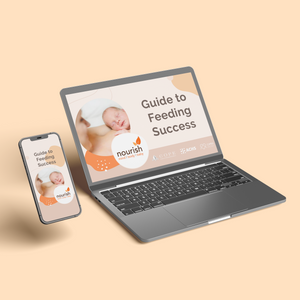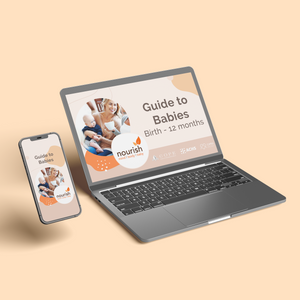Breastfeeding lying down, also known as breastfeeding in the side-lying position, often gets hyped as the ultimate nursing position. Yet, for a new mum, it’s not the easiest nursing position to get right. If you have not yet tried breastfeeding lying down, we highly recommend giving it a go!
The Benefits of breastfeeding lying down
The number one reason new mothers love to breastfeed lying down is the comfort it provides in the sleep-deprived first months. The mother gets more rest lying down, especially when nursing in the middle of the night. For a tired mother, it’s safer to feed lying down than go sit on the couch dead tired.
Breastfeeding lying down is also great for mothers who might find sitting down painful after delivery. It’s especially great for those who have had a c-section or stitches, or if you’re suffering from back pain.
Overall, breastfeeding lying down can make feedings much more comfortable for both you and your baby. For many babies, it’s easier to cope with a fast flow of milk in this position.
How to breastfeed lying down, step by step:
While some mothers find breastfeeding lying down very natural, others might need a bit of help. You might be asking; where am I supposed to put the baby, my arms or my breasts? Here’s how to master the side-lying breastfeeding position in just a few steps.
- Lie down comfortably on your side, facing your baby with your head on a pillow.
- Roll your baby towards you, onto his or her side, lining up the nipple with their nose.
- Place your arm cradled over the top of the baby’s head and around the back. This way, if you fall asleep, the baby is still safe. Support the back and neck with your forearm and hand but avoid contact with the head.
- Let the baby attach or help by hugging him/her onto your breast.
- Pull your baby’s bottom towards your body, so his or her nose doesn’t go into your breast.
- Bring your knees up to make sure your baby doesn’t slip under the blanket in case you fall asleep.
- When finished, the baby can naturally fall off the breast and roll over on his or her back. Read more about safe sleeping.
Many mums who at first find the side-lying nursing position difficult end up completely falling in love with it. Some even use it over their whole breastfeeding journey! Nourishing your baby while getting some well-deserved rest at the same time is a win-win situation.
For more breastfeeding advice, you may like to try our Guide to Feeding Success Course.
About the Author: Jane Barry - Your Health Content Expert
Jane Barry is a registered nurse, midwife, and child health nurse with a passion for combining clinical expertise and writing. She has nearly 30 years of specialist experience in child health nursing and holds a Bachelor's Degree in Applied Science (Nursing). Jane specialises in women’s health, parenting, pregnancy, babies and maternity care, child health, nutrition, feeding, teething, and dental health issues.
An active member of AHPRA, The Australasian Medical Writer’s Association, Health Writer Hub, and the Australian College of Children and Young People’s Nurses, Jane Barry delivers health content with professionalism and clarity.
Our Products
-

01. Guide to a Healthy Pregnancy
$55 -

02. Positive Birthing Course
$55 -

03. Infant Feeding Guide
$55 -

04. Baby Sleep Guide - First 12 Months
$55 -

05. Toddler Parenting Course 1 - 3 Years
$55
-
 When to Start Antenatal Classes?
When to Start Antenatal Classes?
Becoming a parent is an incredible milestone, but it comes with a host of changes that can be daunting, especially for first time parents. Antenatal classes are all about offering expectant parents the education they need to make informed decisions, look after their bodies and care for their newborn babies. While you probably already have a long list of things you need to accomplish during your pregnancy, it’s a good idea to make time to attend antenatal classes.
-
 Development Milestones 4-8 Months
Development Milestones 4-8 Months
As they reach the middle of their first year, you'll start to see bigger leaps in their growth and ability!
In this article, we’re going to discuss your baby’s developmental milestones between 4-8 months, and what you can expect along the way.





 When to Start Antenatal Classes?
When to Start Antenatal Classes?
 Development Milestones 4-8 Months
Development Milestones 4-8 Months








